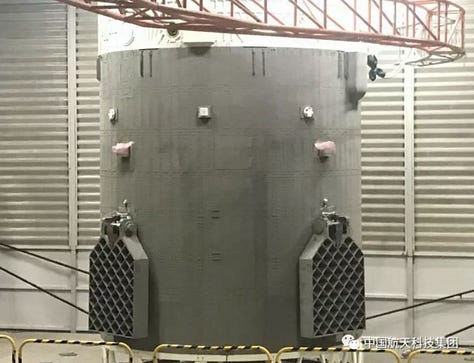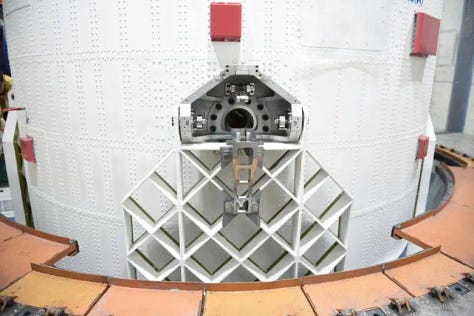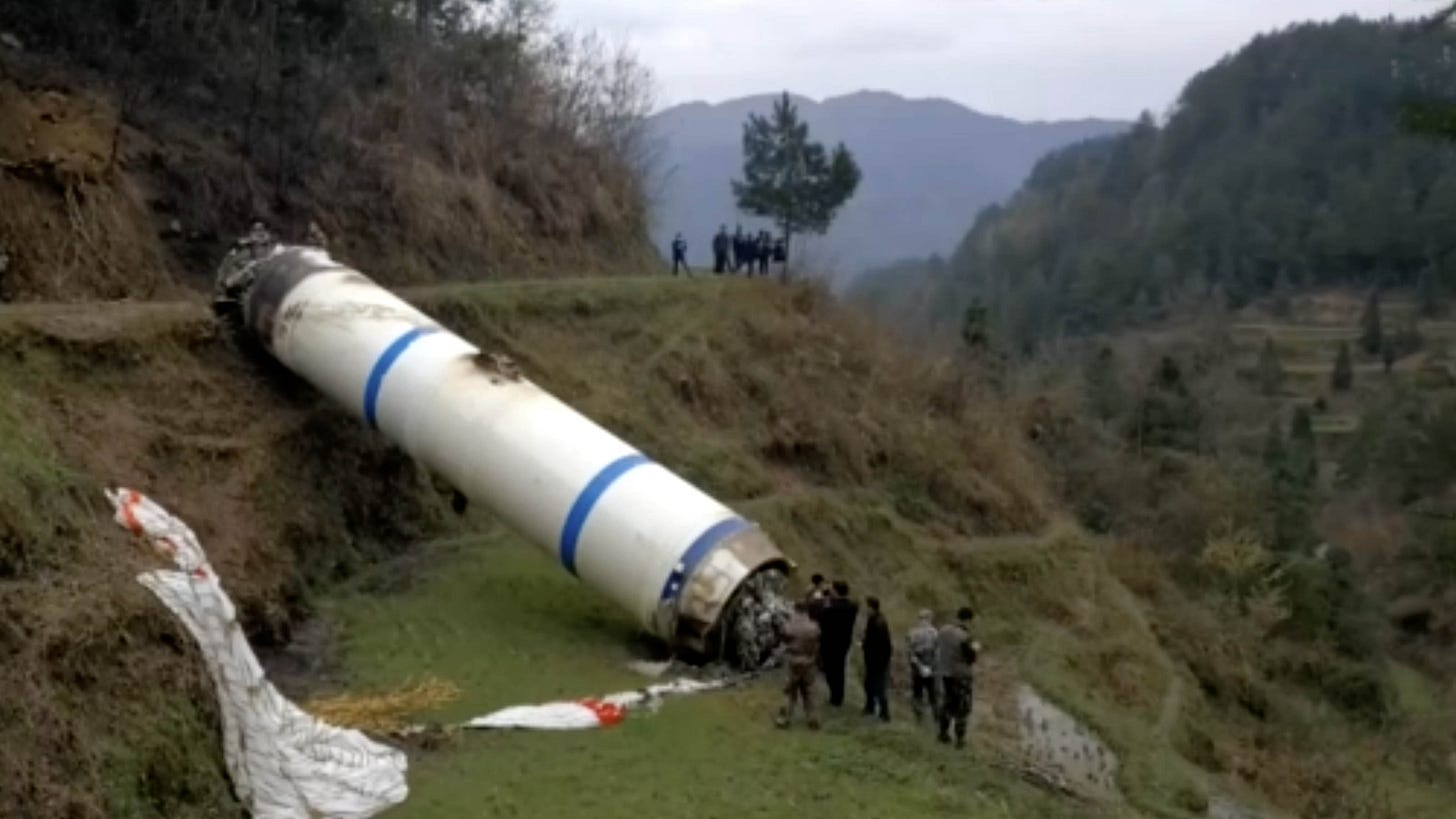Testing Grid Fins on Older Rockets to Support Reusability Efforts
Plus, the added benefit of guiding booster debris.
To support China’s reusable rocket efforts, the country’s older launch vehicles have been equipped with grid fins for several tests.
Beginning in July 2019, legacy Long March rockets1 began to be equipped with grid fins to test the hardware for several in-development reusable launch vehicles. The first test was with a Xichang-based flight of a Long March 2C, with its four fins and interstage painted with a grey material to mitigate the heat of staging. Critically, the first use of the grid fins verified their ability to untuck from the side of the first-stage and lock into position for descent, as well as having servos actuate them for a controlled descent.
Following tests of grid fins in recent years have been:
Test two: A Long March 4B first-stage flew a lower trajectory (as it’s a three-stage rocket) in November 2019 using four grid fins during a launch from the Taiyuan Satellite Launch Center.
Test three: Another Long March 4B, flying out of the Jiuquan Satellite Launch Center in September 2020, flew another four grid fins, including a re-used one from the prior test.
Test four: In October 2021, a Long March 2D, flying from Taiyuan, tested four grid fins for the first time.
Test five: Another Long March 2D, flying from Taiyuan in July 2023, tested another four grid fins.
Test six: In May 2024, a Taiyan-launched Long March 2D flew the first of a new design of the four grid fins that were reported to allow for greater control during descent.
Test seven: A Long March 4B provided the first lower-trajectory flight of the new grid fin design in November 2024 during a flight from Taiyuan.
Test eight: The Long March 2D provided yet another test for four grid fins with a Jiuquan launch in January 2025.
By testing grid fins on legacy launch vehicles, state-owned launch providers, like the China Academy of Launch Vehicle Technology and Shanghai Academy of Spaceflight Technology, are aiming to perfect the hardware and test descent guidance software before they fly upcoming reusable rockets. Additionally furthering reusable rocket development was a 75-kilometer hop test conducted in January, which utilized the new grid fin design during its atmospheric descent.



Grid fin tests on legacy Long March rockets have the added side effect of reducing booster debris incidents2. Currently, China’s inland launch sites issue warnings to local governments responsible for areas within the expected drop zones, instructing them to evacuate. However, this adds economic costs3 to each launch, as well as inconveniencing residents.
Beyond grid fins, there are also lower-tech ways to mitigate booster incidents. One such way is by installing parachutes on side-mounted boosters4. The most well-publicized use of parachutes on a booster was during the launch of a Long March 3B/E in March 2020, leading to one of its boosters being found just 25 minutes after it touched down, mostly intact.

Using grid fins or parachutes on boosters is said to have shrunk drop zone warnings by about 80 percent already when used on legacy rockets.
Eventually, once reusable launch vehicles overtake their legacy Long March counterparts, in terms of flight rate and cost, booster incidents will disappear (excluding in-flight anomalies). Private companies and state-owned manufacturers are developing multiple reusable first-stage boosters for upcoming launch vehicles that will guide themselves back to the launch site or to established downrange landing facilities.
Long March launch vehicles based on older designs that use hypergolic propellants. A list of them is available here.
Where a Long March booster falls near an improperly evacuated area. The most recent incident was in January when the Long March 3B/E Y106’s first-stage or booster fell in Zhenyuan County (镇远县), Guizhou Province (贵州). Before that, the Long March 2C Y50’s first-stage was spotted falling in Guiding County (贵定县), also in Guizhou.
By businesses having to close for possibly several days, or through buildings possibly needing repair.
Central boosters (i.e. the Long March 2D or Long March 3B/E’s first-stage) cannot have parachutes installed as they would be burned into an unusable state during staging.



